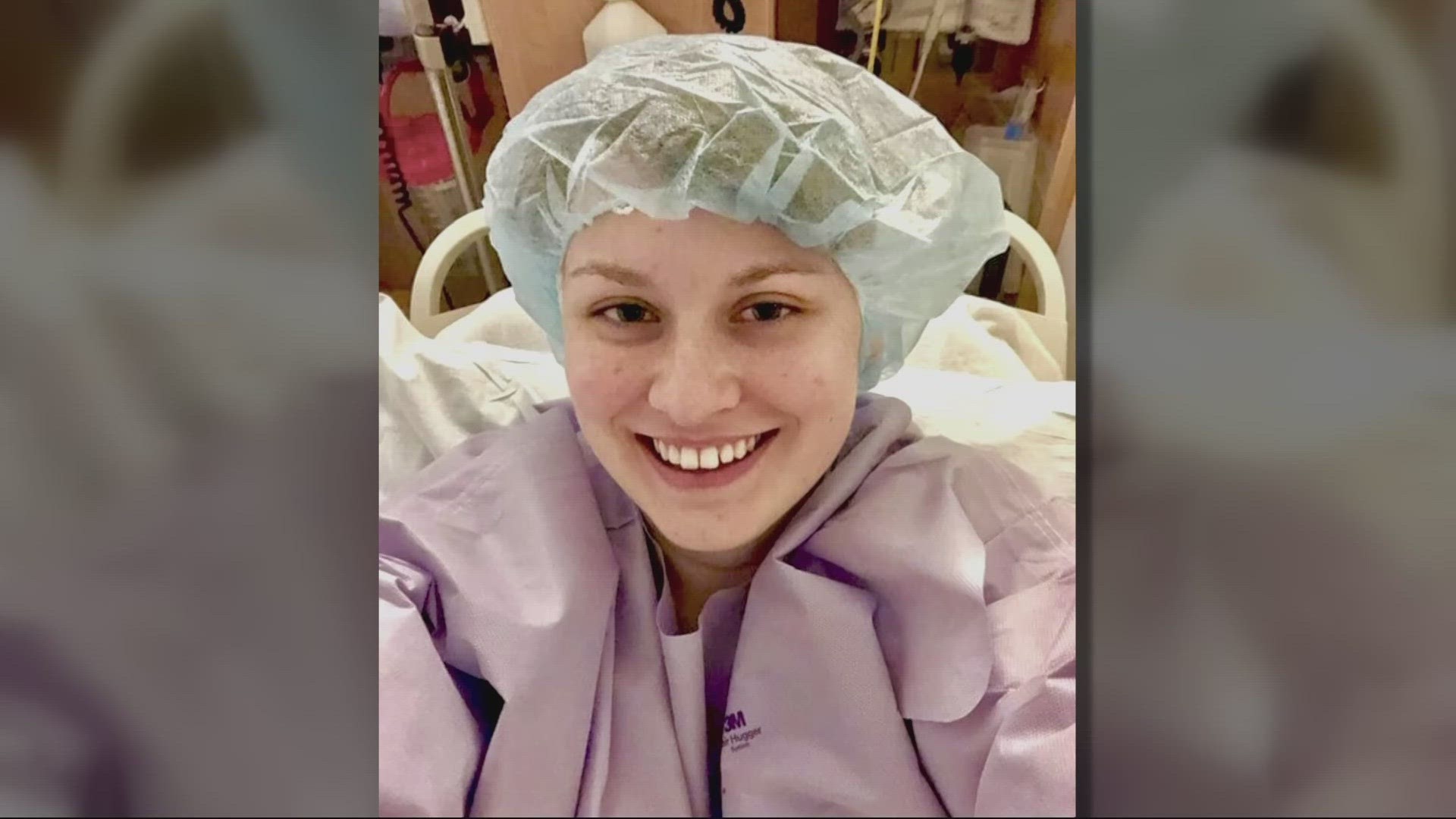PORTLAND, Ore. — Another first from Oregon Health and Science University (OHSU): Doctors there are treating two different neurological conditions with one brain implant. It’s something that’s never been done before, and it is the patient who suggested it to doctors.
“Life isn’t as unpredictable as it used to be,” Amber Pearson said.
From driving to work to dinner with friends, the 34-year-old from Albany is finding freedom in the day-to-day.
“I’m happier, and I’m able to do just so much more than I used to,” she said.
Tasks that may seem simple to some come with a heavy burden for Amber. She has lived with obsessive-compulsive disorder (OCD) for about ten years, and she's been living with epileptic seizures for even longer since she was a teen.
“One time I had a seizure, and it was so bad I had a cardiac arrest, and now, I have a pacemaker. My mom ended up sleeping in my room for eight months because she was so worried about me having another one,” Pearson said.
Even so, Pearson said OCD has been harder to live with: While epilepsy brings limitations to her life, OCD controls it.
“OCD — for me at least — is way worse than epilepsy because everything you do during the day revolves around the obsessions and the compulsions,” she said.
Pearson deals with checking compulsions and contamination OCD. She would wash her hands until they bled. She couldn’t sit down to eat at the table with family or friends because she felt like her food would get contaminated. Instead, she’d eat alone by herself in another room.
“It takes a lot out of you. It’s tiring and alienating,” Pearson said. “It’s embarrassing. That’s probably the worst for me: how embarrassing it was doing all these things and trying not to let my friends see it.”
Just to do something such as getting ready for bed could take 45 minutes to an hour. Before falling asleep, she would have to check all the windows and doors, make sure the stove was off, and check under the beds and in each closet.
“Because you’re thinking about it constantly, it’s tiring. You’re constantly exhausted from it,” Pearson said.
That all started to change after a procedure at Portland’s OHSU in March 2019.
She became the first person in the entire world to benefit from a single stimulator implanted in the brain to effectively control these two life-altering conditions: seizures caused by epilepsy and compulsive behavior caused by OCD.
“If you think about how these things unfolded, it’s pretty miraculous, to be honest with you, that we ended up where we are,” OHSU Professor of Neurosurgery Dr. Ahmed Raslan said.
He implanted Pearson’s primary device with the sole purpose of controlling her seizures, but she had an idea of how to make that 32-millimeter-long electrode go even further.
“I had already heard of deep-brain stimulators for OCD, so when I heard that I was going to get this implant for epilepsy, I asked them, 'Do you think we could also try to get the OCD part of the brain?' And they were intrigued by that.” Pearson recalled.
“When she brought up this idea, I said, 'Whoa, this is very smart. I wonder why we didn’t think about this?'” Dr. Raslan said.
The implant uses the interactive programming of what’s called the responsive neurostimulation system.
“There is a computer chip and a pulse generator that reads the brain activity, analyzes it and sends a signal that’s generated from the battery,” Dr. Raslan explained.
It has been about four years since receiving the implant, and since then, Pearson’s life has changed.
“I am normal when I’m around people getting to travel, go to eat with people while I’m out and talk to them — I don’t have to worry about all this awkwardness that the OCD had before or the drawbacks of epilepsy,” Pearson said.
Her epileptic seizures are better under control, and the impact on her OCD has been profound.
After embarking on this journey, Pearson said she has found her new calling: She is getting ready to go back to school for surgical technology and hopes to one day work with the doctors who helped make it all possible.

